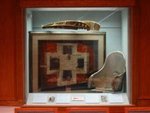Dernancourt
Recruit
- 4
- Feb 8, 2008
I have voted for Sgt Popkin. My Fathers Father, (my grandfather) Henry (Harry) Heywood, was in the 24th Machine gun company with Cedric Popkin. Grandpa, had a first hand account of the event. Over the meal table for decades after the war, he told his four children of the war events he took part in. Much detail was passed on to his children, (My father being one). Grandpa believed that Popkin shot the bullet that killed Baron Manfred Von Richthofen. On all the previous approaches by The Baron, in his aircraft, the soldiers on the ground headed for their dugouts for safety from air-fire. But Popkin got tired of this, and on this occasion stayed out on his Vickers and proceeded to fire at the plane. He (Popkin) was described as a bit of a risk taker, by Grandpa, and wanted to put an end to the threat imposed by The Red Baron. Dale Titler in his book has a copy of the photo in the London Museum of the four soldiers in the 24th machine gun company. Harry is next to Cedric in the middle. I would be interested to know the names of the other two soldiers.




